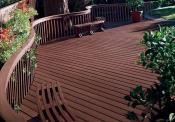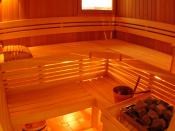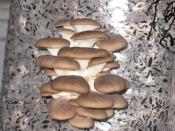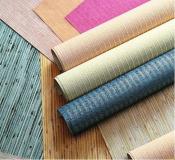Search
Login
Cork wallpaper and their types, glue cork wallpaper with your own hands, how to do it right
Children's, living room, hallway, bedroom - the design of any of these rooms can be not only interesting, but also fashionable, perfect, special. New finishing materials will help to realize original and original ideas for the design of the premises. Today, many repair professionals are focusing on such a novelty of decor as cork wallpapers. They look quite unusual and attractive, in addition - they have unique quality characteristics.
Content
- Cork wallpapers and their production video
- Cork wallpapers, their types and advantages video
- How to glue cork wallpaper video
Cork wallpapers and their production
In the production of cork wallpaper, manufacturers resort to the use of only natural and natural materials, namely, they take the bark of a cork tree, or rather, oak, growing on the shores of the Mediterranean Sea and in the south of Europe.

There are two subspecies of these wallpapers - made on the basis of paper and baseless. The baseless ones are done as follows - the bark of cork oak is crushed to the state of crumbs, then it is pressed with a thin layer. Their main advantage is the fact that they do not use adhesives in their manufacture. When processed by high temperature, crumbly from the bark itself forms a resinous-adhesive composition, which, when cooled, connects all the particles. In stores, such a subspecies of cork wallpaper is quite rare.

Much more often on sale you can find cork wallpapers based on paper. The process of their production is as follows - a thin veneer of cork is glued onto a paper base. The natural cork structure is very interesting and not ordinary, it has natural shades - from ocher to delicate beige. Looking at cork wallpapers in the photo, you can also notice that in some cases designers use tapestries made of painted veneer. Glued cork wallpaper in the usual way, it is also possible to purchase material with a self-adhesive coating.
Cork wallpapers, their types and advantages

Cork wallpapers have a lot of positive qualities: they have a rather long life, they are not subject to deformation due to mechanical damage, they are easy to care for, as they are opened with a layer of varnish or wax, provide isolation from noise, do not absorb extraneous odors, are not allergenic .
These wallpapers will perfectly fit into the interior of residential buildings and the decor of non-residential premises.
It should be noted that these wallpapers are absolutely not electrified, that is, they do not have the ability to attract and hold dust, they are not at all difficult to wash and clean. Since they tend to repel dirt, the range of use is expanding - commercial premises and halls for trade, office corridors and halls, you can decorate walls, columns or use to decorate other decorative elements.
It should also be noted that cork wallpaper prevents the growth of microorganisms, does not change color from bright sunlight, inhibits the appearance of echoes, and helps reduce noise. Many who have encountered cork wallpaper have noticed their excellent isothermal qualities. In the warm summer season, the cork perfectly holds fresh air in the room. In the winter cold, cork wallpaper, perfectly store heat.

Cork wallpaper manufacturers produce in sheets or rolls. The rolled version is more convenient for specialists who are involved in wall pasting with this type of coating. It should be noted that cork wallpaper in rolls of 5500X760 mm in size with a paper base is very common. Cork wallpapers are perfectly attached to different surfaces, whether it be concrete or glass, natural wood or a wall with plaster.

Cork wallpaper for walls and floor coverings are very hygienic and interesting, making it possible to provide excellent sound insulation. They add design to fashion and grace. However, for cork wallpaper in the interior to serve as a worthy decoration - the technology for gluing them should be observed - otherwise they will not retain their given shape and lose their decorative appearance.
Adhesive cork wallpaper butt.
How to glue cork wallpaper

To complete the work, you will need:
- rolls of cork wallpaper
- drywall knife
- acrylic glue or special glue for cork
- level
- metal ruler
- plumb
- glue blade
- comb
- bucket filled with water
- rags
Bring cork wallpaper from the store home in the packaging from the factory. Since this material reacts to changes in air humidity, do not deform the package. We advise you to immediately cut the rolled wallpaper into pieces of the desired size, then spread it and press the edges with something heavy.
Get ready for the wall. First you need to plaster it, then give it smoothness and, at the end, primer. If the glued wall made of drywall - you can skip the item about plastering - it will be enough to prime. Slight surface flaws do not have a role, however, it is desirable that the surface is relatively flat.
Decide where you start pasting. We recommend starting from the corner. In principle, there are various options. First of all, they depend on the dimensions of the wall being glued and on the number of possible permissible waste. For better gluing, draw a vertical line across the width of the roll from the corner.

You should carefully consider the choice of glue - the wallpaper is quite heavy and requires the use of high-quality and reliable adhesive. Carefully read the glue instructions on the packaging. When you use acrylic glue - the work should be quick and clear. Spread a section of the wall in an area equal to a cut piece of wallpaper. Glue evenly with a comb. Attach the whole piece to the wall, let all the air out, press down. Believe me, cork roll wallpapers, it is much easier to glue with an assistant. Glue all remaining pieces in a similar manner.
Excess glue must be removed with a knife. It makes no sense to remove it with water, it will not give a result, but only give the surface a white coating. In this regard, the excess glue would be more correct to remove by scraping or cutting.
If desired, cork wallpaper, after gluing and drying completely, can be opened with varnish.





